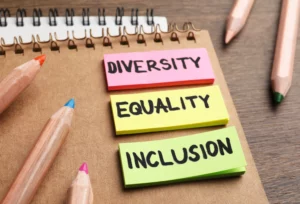The modern business environment is constantly changing, growing at a fast pace. Organizations need to be able to explore new opportunities while efficiently utilizing the existing capabilities.
The strategy that implements this type of balance employs “ambidextrous leadership”. These leaders possess the unique ability to encourage variance and experimentation.
This sparks breakthroughs in innovations, while parallelly ensuring efficiency and implementation of ideas. These leaders are able to adapt their leadership style to fit the evolving challenges that appear in the modern workplace.
Ambidextrous leaders are able to achieve efficiency as well as innovation, both of which work for short term projects as well as for the long run.
Key Characteristics of Ambidextrous Leaders
There are three key characteristics of ambidextrous leaders:
- Flexibility : They are adaptable and able to switch between different leadership styles and behaviors as needed.
- Paradoxical Cognition : They are comfortable with contradictions and can grasp multiple perspectives at once.
- Social Support : They create a culture where employees feel safe to explore new ideas but also know when it’s time to implement and achieve set targets.
Ambidextrous leaders encourage exploration behaviors like creativity and experimentation. Their adaptability allows them to optimize both innovation and implementation.
Exploration Behaviors Encouraged by Ambidextrous Leaders
Ambidextrous leaders encourage exploration behaviors in their teams and organizations. These behaviors help drive innovation, creativity, and idea generation.
Key exploration behaviors that ambidextrous leaders cultivate include:
Autonomous Thinking
Ambidextrous leaders give employees autonomy to think freely and independently. This fuels the generation of new ideas and unique perspectives.
Employees are encouraged to question assumptions, standard processes, and received wisdom. This leads to breakthrough thinking.
Leaders allow time and space for reflecting, brainstorming, and conceptualizing new ideas.
Experimentation
Ambidextrous leaders encourage calculated experimentation and controlled risk-taking. This allows testing new concepts without excessive repercussions for failure.
Employees are urged to try new methods, explore diverse options, and pilot test inventive prototypes. This leads to learning through experience.
Experimentation breeds an innovation culture. Employees know that fresh concepts will get a fair trial.
Challenging the Status Quo
Leaders give permission to constructively challenge the status quo. Employees can critique legacy systems, processes, and beliefs without fear.
Status quo challengers unlock organizational potential and growth opportunities. They pivot the company for the future.
The exploration behaviors promoted by ambidextrous leadership result in higher levels of inventiveness, adaptation, and readiness for change.
This positions organizations strongly for the future in rapidly evolving markets.
Behaviors Encouraged by Ambidextrous Leaders
Ambidextrous leaders not only encourage exploratory and innovative behaviors, but they also recognize the importance of exploitation behaviors that translate ideas into tangible outcomes. They promote:
Efficiency
Ambidextrous leaders emphasize streamlining processes, eliminating waste, and optimizing resource allocation. They train employees on process improvement frameworks to maximize output.
They track metrics related to costs, quality, and productivity. By monitoring efficiency KPIs, they can make data-driven decisions to boost results.
They reward employees and teams who make processes leaner. Celebrating small wins maintains morale while progressing towards efficiency targets.
Implementing Ideas
While generating ideas is crucial, ambidextrous leaders ensure teams select the most promising ideas and follow through on execution.
They advocate for rapid prototyping, piloting on a small scale, and iteration based on user feedback. This fail fast, fail cheap approach accelerates learning.
They encourage collaboration across functions and clear communication to turn ideas into shippable products. Streamlining handoffs prevents drops in accountability.
Goal Orientation
Ambidextrous leaders establish stretch goals based on the organization’s objectives. Goals cascade down through business units and teams.
They encourage process discipline in pursuit of defined targets, whether productivity quotas, budget goals, or net promoter score aims.
By reviewing goals frequently and keeping employees focused, they ensure exploitation activities align to strategy.
The dual focus on exploration and exploitation makes ambidextrous leaders uniquely equipped to spearhead innovation while maximizing business performance.
Their versatility in mindsets, capabilities, and behaviors drives both ideation and execution.
Benefits of Ambidextrous Leadership
Ambidextrous leadership provides numerous benefits for organizations. The ability to balance exploratory and exploitative behaviors allows companies to innovate, adapt to changes, and achieve high performance.
Innovation
Ambidextrous leaders encourage experimentation, new ideas, and challenging the status quo. This sparks creativity and innovation among teams.
Employees feel empowered to think differently, take risks, and develop breakthrough products, services or processes.
Adaptability
In turbulent markets, the ability to adapt is critical. Ambidextrous leaders can shift directions quickly when needed.
They balance the ability to implement new innovations while running efficient operations.
This organizational dexterity allows them to rapidly respond to technological disruptions, customer changes or market conditions.
High Performance
Balancing exploration and exploitation drives both short-term and long-term results. Companies can improve existing processes for efficiency while also investing in risky new innovations for the future.
Ambidextrous organizations that do both tend to significantly outperform more specialized peers over time. They grow steadily while also building future competitive advantages.
The unique combination of encouraging experimentation and efficiency establishes an organizational culture able to constantly reinvent itself.
This leads to higher satisfaction, engagement, creativity and productivity over the long run.
Cultivating Ambidextrous Leadership
Effective ambidextrous leadership requires intention and effort to develop within an organization. Leaders can cultivate ambidextrous capabilities in the following ways:
Hiring Practices
- Seek both explore and exploit competencies during hiring process
- Assess candidates on dimensions like creativity, efficiency, flexibility
- Hire team members with complementary strengths
Training Programs
- Conduct workshops on topics like design thinking, agile development
- Encourage experimentation through innovation labs, pilots
- Provide coaching on topics like change management, goal setting
Performance Incentives
- Incentivize both short-term results and long-term innovations
- Recognize individuals who champion new ideas and also execute efficiently
- Structure rewards around key outcomes for exploration and exploitation
Taking a systematic approach to hiring, training, and incentives helps instill ambidextrous behaviors across all levels of an organization.
This leads to a culture comfortable with the paradox of combining certainty with uncertainty, autonomy with alignment. The result is sustainable innovation and strong operational excellence.
Closing Thoughts
Ambidextrous leadership gives modern leaders the capability to navigate complex and changing business environments. Ambidextrous leaders encourage both innovation and efficient execution among their teams.
The benefits of ambidextrous leadership are clear. These leaders drive greater innovation, adaptability, and performance from their organizations.
However, cultivating these capabilities requires concerted effort across talent management practices. Organizations must hire for curiosity and open-mindedness, while also selecting disciplined implementers.
Formal training programs can then build critical thinking along with accountability. The incentives should reward both the genesis of creative ideas as well as their flawless delivery.
This kind of leadership turns fruitful with right leadership and human capital strategies. They can empower their workforce to simultaneously explore new opportunities while exploiting existing capabilities.
This creates a potent mix of qualities that position organizations for enduring success. As businesses get more complex, the need for modern leadership styles like this one increases.





